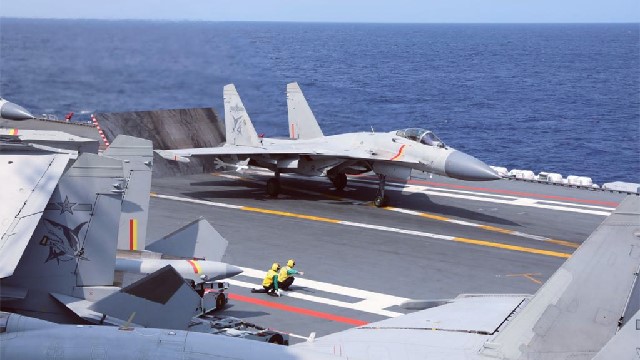Practice makes perfect, or so the saying goes….
When it comes to the US Navy SEALs, their philosophy is “We expect to lead and be led. In the absence of orders I will take charge, lead my teammates and accomplish the mission.” Successful interoperability depends on enacting this type of philosophy among our military personnel and units. It permits military the flexibility in selecting the best individual for a task and leads to a high percentage of reports to the Pentagon stamped “mission accomplished.” China may reverse engineer, indigenously design, and own advanced weapons systems, but the People Liberation Army (PLA), its navy, and air force lack the political culture, real-time battle experience, and the know how earned and practiced by America’s military elite. There are, however, differing opinions in Washington about China’s real intentions leading up to next year’s presidential elections in the US and Taiwan.
This week Beijing is attempting to intimidate Taiwan with its “Joint Sword” exercise in response to Taiwan’ President Tsai Ing-wen’s recent US visit and meeting with House Speaker Kevin McCarthy in California. It is the largest rehearsal of a future invasion of Taiwan since the August 2022 PLA exercise practicing the blockade of Taiwan. While Xi Jinping may not have selected what option to use to take back Taiwan, this week’s military exercise sheds light on what China is and is not capable of in the near future, despite its recent provocative behavior. Ely Ratner, assistant secretary of Defense for the Indo-Pacific, at a Thursday event at the Hoover Institution, argued that China won’t invade Taiwan due to the high cost it would incur. He added “Deterrence is real; deterrence is strong.” While admitting that China is the only country with the capability and intent to overthrow the world order, he noted that in the past 12 months the US and America’s allies have had a regional “breakthrough year for alliance and partnerships” in countering PRC military and territorial ambitions.
Japan has increased its military spending and Washington and Manila have signed an agreement to establish four new sites for the deployment of US forces. Ratner also pointed out that Australia, the United Kingdom, and the US have made progress on a technology sharing agreement which will further strengthen cooperation in the region, more co-development, and co-production activities “that make our defense industrial bases more compatible.” At the same time, the US is expanding its regional exercises to increase security and allied cooperation and offset any Chinese military aggressiveness in the Indo-Pacific.
China’s August 2022 exercise tested PLA joint force operations by employing coordinated use of space, cyber, air, army and naval forces and rehearsed firing ballistic missiles in the waters surrounding Taiwan. It served as one element of Beijing’s Taiwan Invasion Strategy joint landing campaign. Some analysts in Washington suggest that China’s aim with these exercises is to ensure it can neutralize Taiwanese ground troops and allied air forces. Other military analysts argue that China still is behind on information dominance and just beginning the real work to integrate an overall invasion strategy and joint logistics.
Xi Jinping may be open to hearing from the Central Military Commission that they are ready to execute the final order to launch an invasion of Taiwan, but the ground truth dictates a different reality. HE will be facing off with joint forces from a number of Asian nations, along with the United States’ military. Ratner says the US and its allies will not be deterred by Xi’s speeches. “We will sail, fly, and operate” in international waters and airspace. He adds that “We’re focused on readiness.” Last year Defense Daily reported that the initiative by the Quad countries, made up of the US, Australia, Japan, and India, is providing flexibility and provides Pacific countries the ability to work together to ensure stability in the region without forcing any to make a choice between the US and China.
The situation between China and Taiwan is more complex than comparing the size of each state’s military. Admittedly, Xi is ramping up the rhetoric and his military’s aggressive behavior, but that doesn’t tell the whole story. China has not faced a shooting war since its short border conflict with Vietnam in 1979. Xi Jinping and the Chinese leadership employ long-term strategic thinking in foreign policy. The work of the Quad and other Asian states over the last year appear to have dulled China’s urge to take imminent military action. Add to this that Russia’s war in Ukraine also has taught China lessons about what happens when a “special military action” becomes prolonged. Beijing’s reaction to Speaker McCarthy’s recent meeting with Taiwan’s president was tame compared to a year ago when then House Speaker Nancy Pelosi visited Taiwan
Hopefully, Xi is considering the events and conclude the cost to take Taiwan through the use of military force is too great a risk.
Daria Novak served in the U.S. State Dept.
Photo: Chinese aircraft carrier training
